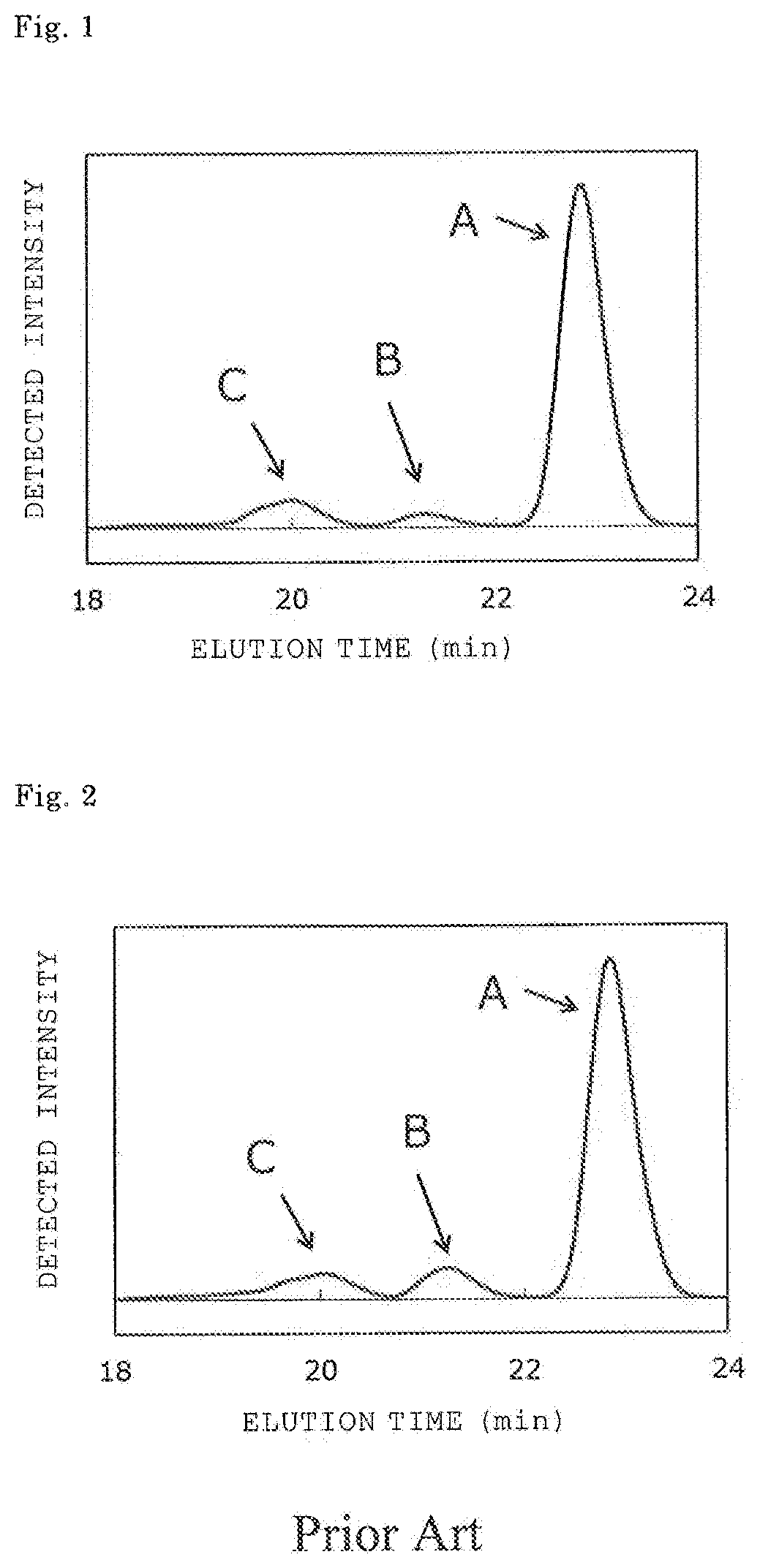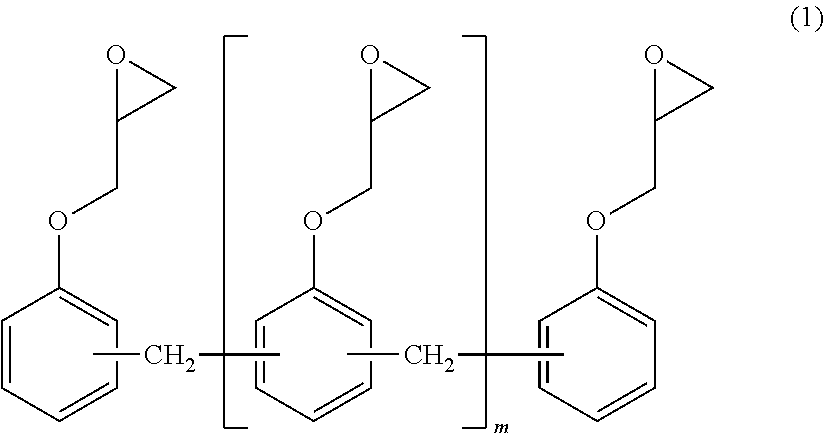Curable epoxy resin composition, and fiber-reinforced composite material obtained using same
a technology of epoxy resin and composite material, which is applied in the field of resin composition, can solve the problems of poor stability of epoxy resin, low mechanical properties of molded products, and inability to meet the requirements of use, and achieves satisfactory impregnability, small increase in viscosity, and low viscosity
- Summary
- Abstract
- Description
- Claims
- Application Information
AI Technical Summary
Benefits of technology
Problems solved by technology
Method used
Image
Examples
synthesis example 1
[0062]3,010 Parts of phenol and 9 parts of oxalic acid dihydrate were loaded into a four-necked glass separable flask including a stirring apparatus, a temperature gauge, a cooling tube, and a nitrogen gas-introducing apparatus. While a nitrogen gas was introduced into the flask, the mixture was stirred, and a temperature was increased by performing heating. The dropping of 43 parts of 37.4% formalin was started at 80° C., and the dropping was completed in 30 min. Further, a reaction was performed for 3 hr while a reaction temperature was kept at 92° C. While water produced by the reaction was removed to the outside of the system, the temperature was increased to 110° C. Remaining phenol was recovered at 160° C. under reduced pressure. Thus, 108 parts of a phenol novolac resin was obtained. The content of a dinuclear body (bisphenol F) in the resultant phenol novolac resin measured by GPC was 97.0% by area.
synthesis example 2
[0063]100 Parts of the phenol novolac resin of Synthesis Example 1, 330 parts of epichlorohydrin (ECH / PN molar ratio=3.5), and 3 parts of water were loaded into the same apparatus as that of Synthesis Example 1, and a temperature was increased to 50° C. while the mixture was stirred. 2.5 Parts of a 49% aqueous solution of sodium hydroxide was loaded into the mixture to perform a reaction for 3 hr. The temperature was increased to 64° C., and a pressure reduction was performed to such an extent that the reflux of the water occurred. 74 Parts of a 49% aqueous solution of sodium hydroxide was dropped into the resultant over 3 hr to perform a reaction. The temperature was increased to 70° C. and dehydration was performed. The temperature was set to 135° C. and remaining epichlorohydrin was recovered. The pressure was returned to normal pressure, and 189 parts of MIBK was added to dissolve the residue. 180 Parts of ion-exchanged water was added to the solution, and the mixture was stirre...
synthesis example 3
[0065]3,010 Parts of phenol and 9 parts of oxalic acid dihydrate were loaded into a four-necked glass separable flask including a stirring apparatus, a temperature gauge, a cooling tube, and a nitrogen gas-introducing apparatus. While a nitrogen gas was introduced into the flask, the mixture was stirred, and a temperature was increased by performing heating. The dropping of 53 parts of 37.4% formalin was started at 80° C., and the dropping was completed in 30 min. Further, a reaction was performed for 3 hr while a reaction temperature was kept at 92° C. While water produced by the reaction was removed to the outside of the system, the temperature was increased to 110° C. Remaining phenol was recovered at 160° C. under reduced pressure. Thus, 134 parts of a phenol novolac resin was obtained. The content of a dinuclear body (bisphenol F) in the resultant phenol novolac resin measured by GPC was 96.4% by area.
PUM
| Property | Measurement | Unit |
|---|---|---|
| mass % | aaaaa | aaaaa |
| viscosity | aaaaa | aaaaa |
| tensile elongation at break | aaaaa | aaaaa |
Abstract
Description
Claims
Application Information
 Login to View More
Login to View More - R&D
- Intellectual Property
- Life Sciences
- Materials
- Tech Scout
- Unparalleled Data Quality
- Higher Quality Content
- 60% Fewer Hallucinations
Browse by: Latest US Patents, China's latest patents, Technical Efficacy Thesaurus, Application Domain, Technology Topic, Popular Technical Reports.
© 2025 PatSnap. All rights reserved.Legal|Privacy policy|Modern Slavery Act Transparency Statement|Sitemap|About US| Contact US: help@patsnap.com



